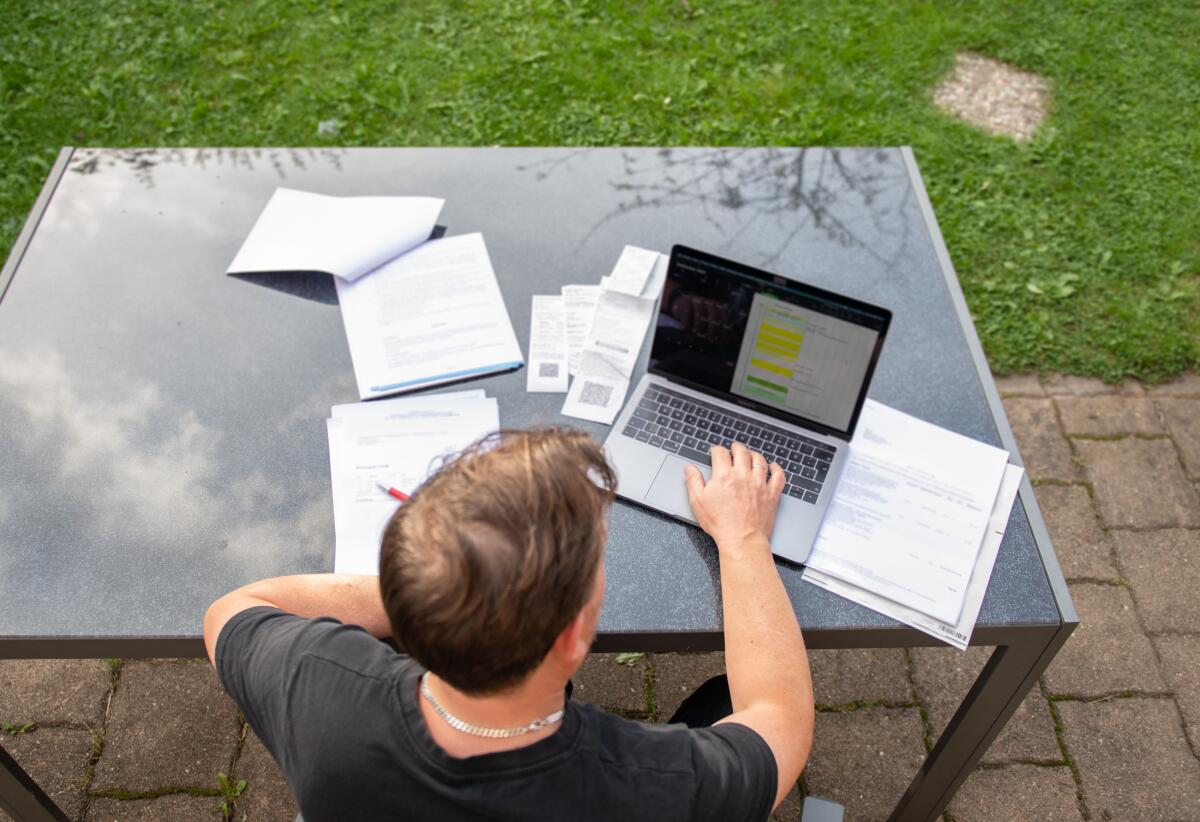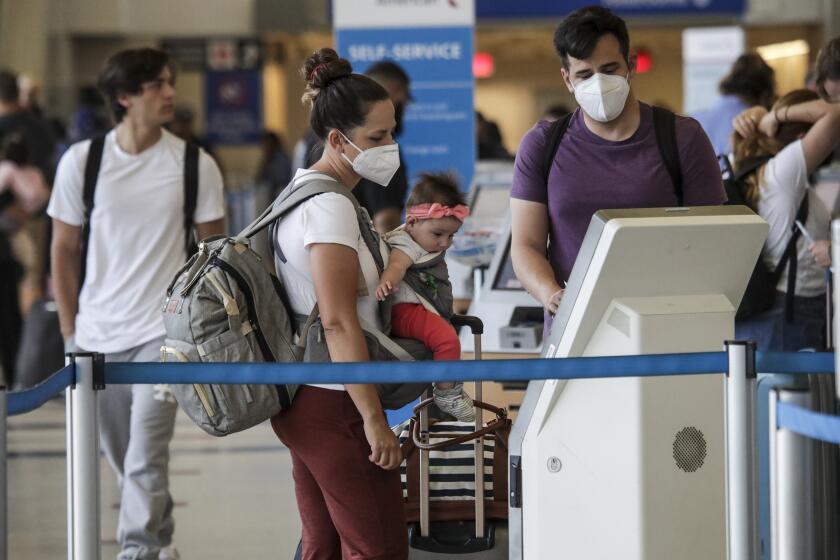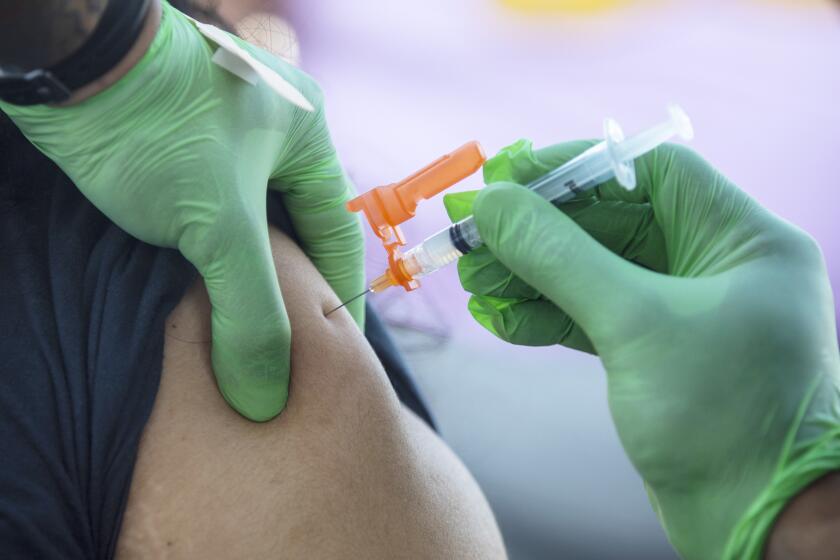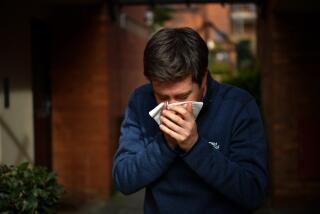Got COVID? Doctors warn powering through it — even from home — can worsen health toll

More than two years into the COVID-19 pandemic, when Dr. Anthony Fauci tested positive for the coronavirus, his federal agency announced that he would “continue to work from his home.”
So did U.S. Secretary of Transportation Pete Buttigieg, who announced on Twitter that after testing positive, “I plan to work remotely.” And so did San Francisco Mayor London Breed, whose office announced she would conduct meetings from home after testing positive.
As vaccines and new treatments have eased some of the alarm around a COVID-19 diagnosis, continuing to work — but from home — has become a familiar practice among professionals who can do their jobs remotely. Fauci was vaccinated and boosted and said he was experiencing mild symptoms, like other officials who said they would stay on the job from home.
Physicians caution, however, that rest is an important part of weathering a COVID-19 infection. Plugging away from home is better than putting others at risk of getting infected, but it can still strain the immune system, worsening the toll of a COVID infection, experts say.
“Sleep equals immunity,” said Dr. Susan Cheng, a cardiologist, researcher and professor in the Smidt Heart Institute at Cedars-Sinai Medical Center. As it fights off the virus, “you want to have your immune system not distracted by anything else,” including stress from work.
People forget that COVID-19 is not the common cold, she said — and even for a common cold, “you do not want to be going 100% or even 80%.” Cheng pointed to studies done long before the pandemic, which found that mice infected with “garden variety viruses” fared much worse if they were forced to swim.
“You really want your body to recover,” Cheng said. “Give it as much rest as possible, to recover as fully as possible.”
L.A. County’s coronavirus case rate hit its highest point in nearly five months over the Fourth of July holiday weekend.
Family medicine specialist Dr. Caitlin McAuley said that “in any acute illness — and COVID especially — we know that rest is important.”
“Getting adequate sleep lets the immune system rebalance,” along with hormones, said McAuley, who sees patients through the COVID Recovery Clinic at Keck Medicine of USC. In addition, “we often don’t acknowledge the fact that when we’re sick, we’re not functioning appropriately mentally as well. So decision making may be impaired.”
“At a minimum, you really should unplug for three to five days,” McAuley said.
The public messages from prominent officials saying they’ll keep working from home are “minimizing the risk of long COVID and encouraging others to think, ‘If I have the virus, I can just push through it,’ ” said David Putrino, director of rehabilitation innovation for the Mount Sinai Health System.
Long COVID occurs when symptoms persist for months or longer beyond an initial infection. So far, data tracking rest and COVID outcomes are sparse, “but point us towards the idea that individuals who did not adequately rest had a higher incidence of persistent symptoms,” Putrino said.
The pressure to keep working with COVID — even if it’s from home — has also troubled labor and disability advocates who see it as normalizing working through illness.
When prominent officials test positive and say they will keep working from home, “it is a way of saying, ‘I am still a powerful person who is able to continue doing my job,’ ” said Jaime Seltzer, director of scientific and medical outreach at #MEAction, the Myalgic Encephalomyelitis Action Network. If the goal was to craft a public message based on the best evidence, “we would say that when you become ill, you should be resting.”
Healthy people are used to being able to push through fatigue, rest for the night, “and wake up more or less feeling back to normal,” Seltzer said. “But we have to recognize that when your immune system is being challenged ... that’s simply not true anymore. And we shouldn’t expect ill bodies to behave like healthy bodies.”
It can also be challenging to get people to understand that mental exertion — like the tasks done during remote work — also uses up energy, Seltzer added.
As of January, nearly 60% of U.S. workers who said their jobs could be done largely remotely were working from home most or all of the time — 2½ times the rate as before the pandemic, according to Pew Research Center surveys. Working from home has been more common among people with college degrees and higher incomes.
“Your labor is supposed to be flexible, but that’s the underside — you don’t always really control when you labor,” said Eileen Boris, a UC Santa Barbara professor who has studied the home as a workplace. At times, “you think you’re choosing to work, but are you? It’s not like you can walk away from the office.”
These long COVID patients reported at least one symptom of COVID-19 two months after first testing positive for the coronavirus, the CDC study says.
Although the rise of remote work has blurred the lines between work and home life, prodding some employees to keep sending emails or holding Zoom meetings while sick, the pressure to stay on the job with COVID has fallen hardest on poorer workers who are less likely to have the option of working from home.
In surveys of thousands of service workers this spring, the Shift Project at the Harvard Kennedy School found that among workers who reported becoming sick — with any illness — two thirds of them said they had worked while ill.
Sick leave is not guaranteed for many hourly workers, and taking even a day off can be an economic blow to their households, said Daniel Schneider, co-director of the Shift Project and a professor of public policy at the Harvard Kennedy School. In the surveys, many workers said that “I was afraid I’d get in trouble for calling out sick.”
Other common responses were that a supervisor had pressured them to work, that they couldn’t get someone else to cover their shift, and that “I didn’t want to let my co-workers down,” Schneider recounted. “That’s the internalization of a sense that, ‘I should work sick.’ But it is a product of a set of corporate decisions to only have just a few people on the floor.”
As of February, roughly a tenth of workers surveyed said they had gone to work with COVID-19 symptoms or after being exposed to the virus because they couldn’t afford to take time off, Kaiser Family Foundation surveys found. Working through COVID symptoms or exposure was much more common — 29% said they had done so — among workers with household incomes under $40,000. Only 6% of workers from households with higher incomes said the same, the surveys showed.
The California Department of Public Health generally recommends that someone who tests positive or has COVID symptoms isolate themselves from others for at least five days, then take an antigen test. Under the guidelines, they should continue to isolate another five days if they test positive or still have symptoms.
If someone still has a fever, even after 10 days, they are supposed to keep isolating until it is gone at least 24 hours, under the state recommendations. California officials also recommend that people continue to wear a mask around others for 10 full days after their symptoms began or they got a positive test result.
McAuley, who sees patients with long COVID, said that she has had some patients “who essentially never really stopped working.” At Keck Medicine’s COVID Recovery Clinic, “we have a lot of patients who have very ‘Type A’ personalities,” McAuley said, “and we do frequently see it’s difficult to have them allow themselves to rest.”
“To even take a week or two to sleep, when they need to sleep, and just be off of work ... for some people that is really a key factor in them recovering,” McAuley said.
As a general rule, “you should be slightly more cautious than you think you have to be,” said Seltzer of #MEAction. She recommended that people learn about “pacing,” a strategy to manage activity that she described as “being active when you’re able and resting when you’re tired — which is harder than it sounds.”
Pacing can include breaking up activities into manageable chunks to avoid too much exertion. Putrino, of Mount Sinai, argued that “pacing is a technique that should be applied to acute phases of COVID infection as much as it should be applied in long COVID.”
“It’s not just, ‘Hey, don’t exert yourself and don’t push too hard’ — it’s an actual strategy that you can learn about how to plan your day,” including setting aside times throughout the day for rest, Putrino said.
Dr. Timothy Brewer, a UCLA professor of medicine and epidemiology, urged patients to pay attention to the signals from their bodies, even if an infection initially seems mild. With COVID-19, “people can do well for about 10 to 12 days and then get very sick,” Brewer said. “Just because you did well in the first week doesn’t mean you’re necessarily going to do well in the second or third week.”
In general, “your body is pretty good at telling you what it needs,” Brewer said. “So if you’re feeling tired and you’re sick with COVID, that’s probably your body saying, ‘Get back in bed.’ ”
More to Read
Sign up for Essential California
The most important California stories and recommendations in your inbox every morning.
You may occasionally receive promotional content from the Los Angeles Times.













